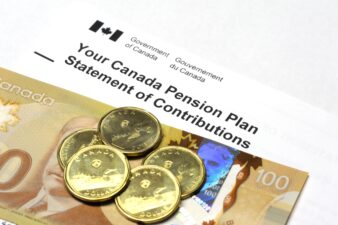The Tax-Free Savings Account (TFSA) is a registered account that was introduced in 2009. Over the years, it has gained massive popularity as any returns generated in the account are exempt from Canada Revenue Agency (CRA) taxes.
The TFSA can hold various qualified investments, such as bonds, GICs (Guaranteed Investment Certificates), stocks, mutual funds, and exchange-traded funds (ETFs). However, a sizeable portion of Canadian residents still hold cash in this registered account.
Let’s see how you can earn enormous passive income in a TFSA that the CRA can’t touch.
What is the cumulative TFSA contribution limit in 2024
In 2024, the TFSA contribution limit has increased to $7,000. It means the cumulative TFSA contribution room for those eligible to contribute to this account since 2009 has increased to $95,000.
While it’s ideal to maximize your TFSA contributions each year, it’s not entirely possible for the majority of Canadians due to the high cost of living, inflation, rising interest rates, and a narrowing savings rate in recent months.
In fact, the average amount in a TFSA is around $41,000, according to a survey from Bank of Montreal. So, let’s see how you may allocate $50,000 in a TFSA to earn a stable stream of passive income.
Invest 20% in GICs
Young Canadian investors can consider allocating around 20% of their TFSA funds to fixed-income instruments such as GICs. The GIC is a low-risk financial instrument that provides a fixed yield on your principal amount. Here, you deposit a certain sum with a bank or a licensed financial institution on which you are paid interest.
The recent interest rate hikes have meant several banks now offer you a tasty yield of 5% on GICs. So, allocating $10,000 to a GIC can help you earn $500 in annual interest income, which is sheltered from CRA taxes.
Invest 20% in dividend-growth stocks
Investors can allocate another 20% to blue-chip dividend-growth stocks such as Brookfield Renewable Partners (TSX:BEP.UN). With a market cap of US$13.9 billion, BEP stock currently trades 50% below all-time highs. However, the pullback in share prices has increased its forward yield to 7%.
Brookfield Renewable is among the largest clean energy companies in the world, and its robust development pipeline should increase future cash flows and dividends.
An investment of $10,000 in stocks such as Brookfield Renewable Partners will generate $700 in annual interest payments, given a high yield of 7%. In case these payouts are increased by 7% each year, your dividend payment will double within the next decade.
Invest 40% in dividend ETFs
Canadians can consider allocating the rest to low-cost dividend-paying ETFs, such as iShares Core MSCI Canadian Quality Dividend Index ETF (TSX:XDIV). An ETF such as the XDIV provides diversification for your portfolio as it holds a basket of high-dividend stocks across multiple sectors.
Moreover, the ETF offers a monthly payout, which means a $30,000 investment in the fund will earn you $150 in dividends each month, given a forward yield of 6%.
So, a total of $50,000 invested across GICs, dividend stocks, and ETFs can result in an annual dividend income of $3,000, all of which is exempt from CRA taxes. This is just an example of how you can use the TFSA to create passive income. The allocation will vary depending on factors such as your age, risk profile, and investment time horizon.







